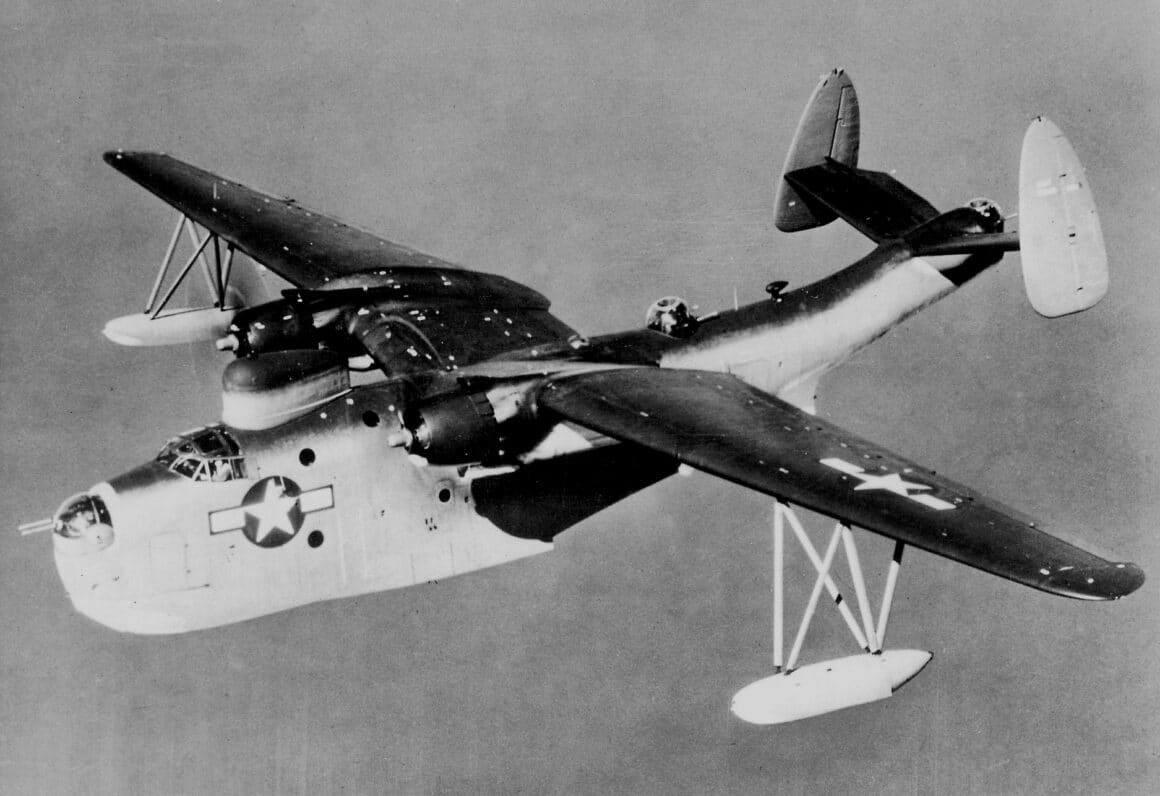The Amphibious Mariner
The final variant of the Mariner was the PBM-5A amphibian. The 40 examples built were equipped with retractable tricycle landing gear, reversible four bladed propellers, and the Westinghouse AN/APS-31 radar found on the PBM-5S2. The PBM-5A flew for the first time during December of 1947 and entered service shortly thereafter. PBM-5As also served with the US Coast Guard. Too late for service during World War II, PBM-5As served with distinction during the Korean War, operating out of Sangley Point in the Philippines. Navy Mariners were replaced by the next generation Martin flying boat, the P5M Marlin. Patrol squadron FIVE ZERO (VP-50) retired the last operational US Navy PBMs in July of 1956. The US Coast Guard retired their last operational PBMs in 1958
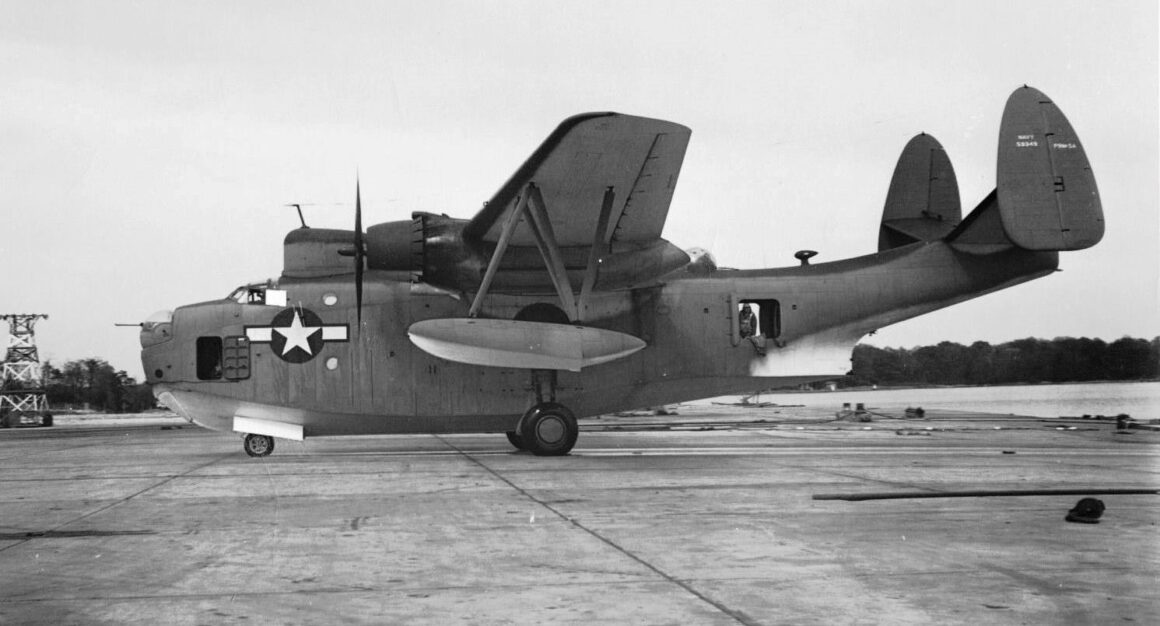
International Service
In addition to a total of 37 US Navy ATU, VH, VP, VPB, VR, and VU squadrons, PBM Mariners were operated by the United States Coast Guard, Argentina, (until 1962), Australia, the Netherlands (until 1960), the United Kingdom, and Uruguay (until 1964). Although a total of 1,367 PBM Mariners were built between 1940 and 1949, today the sole surviving PBM Mariner is the PBM-5A (Bureau Number 122071) on display at the Pima Aerospace Museum in Tucson, Arizona. The aircraft is on loan to PAM from the Smithsonian National Air and Space Museum.

Mariner Trivia
Tadpole Clipper
Martin built a flyable single-seat 3/8 scale model of the Model 162 for design validation. The aircraft, designated Model 162A and dubbed the ‘Tadpole Clipper’, was first flown during December of 1937. It was powered by a pair of Chevrolet four-cylinder engines driving the propellers via a V-belt drive arrangement. After a successful test light program the aircraft was stored. Today the Tadpole Clipper is on display in the Decker Gallery at the Museum of Industry in Baltimore, Maryland.

Catapult Mariner
The PBM-2 variant of the Mariner was to be equipped with additional fuel capacity to provide extremely long range of 4,000 miles. The XPBM-2 airframe was strengthened in key areas to allow it to be launched using a catapult system installed aboard a barge. Even though the arrangement was tested (successfully) during 1942, the PBM-2 was not ordered into production.
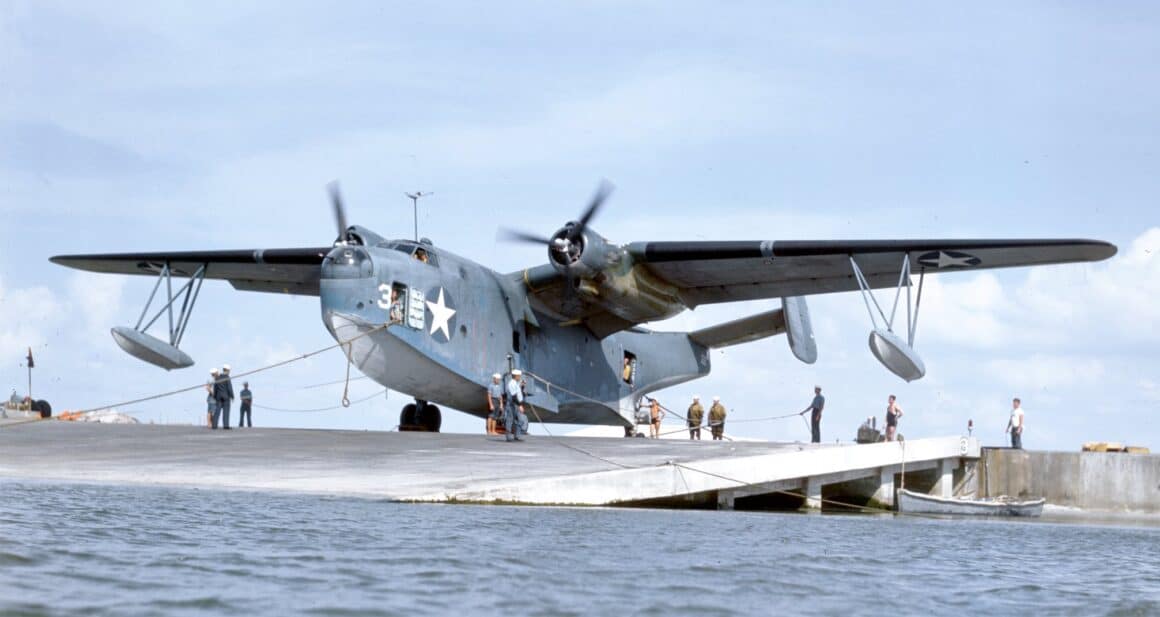
Nickel Boat
One VP-74 PBM-3C was credited with sinking two U-Boats (U-128 [assisted] on 17 May 1943 and U-513 on 19 July 1943) while operating from the tender USS Barnegat (AVP-10) based at Rio de Janeiro in Brazil. The Marlin, coded 74-P-5 and dubbed the ‘Nickel Boat’, sank both U-Boats using depth charges. Patrol Plane Commander LTJG Roy Whitcomb was a big believer in the nose turret mounted twin .50 caliber machine guns too.

The Mirage of Willcox Dry Lake
In 1944 a PBM-3D suffered dual engine failure over Arizona while being ferried to the West Coast. Quick thinking pilot LT Scott Fitzgerald “ditched” the Mariner on Willcox Dry Lake east of Tucson, losing only the starboard side wing float and some sheet metal off the hull in the process. The aircraft was stripped to lighten it, the engines were repaired, special beaching gear was attached, and the Mariner was flown off the dry lake bed and on to San Diego- thereby earning the aircraft the nickname ‘The Mirage of Willcox Dry Lake.’
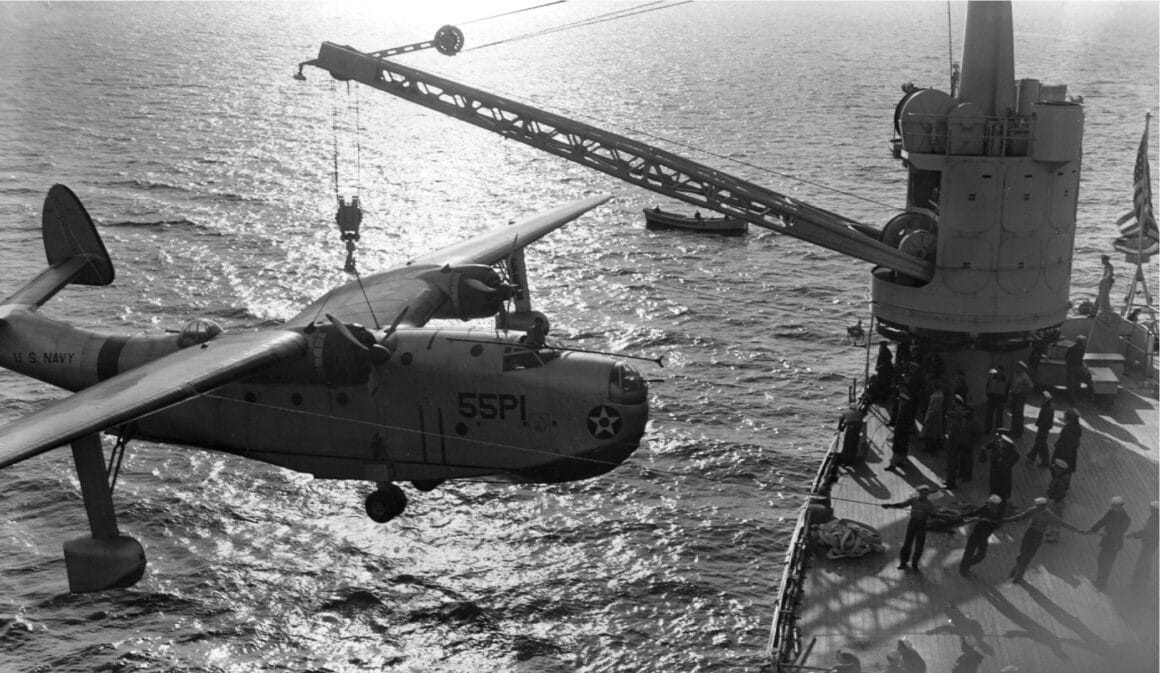
More Power…for the B-29
The Navy looked at using the Wright R-3350-8 Cyclone engine to power a new PBM-4 variant of the Mariner. Capable of generating 2,700 horsepower each, the engines would have provided a substantial increase in available power. However, even though orders for the PBM-4 variant of the Mariner were placed, they were never filled. The order was cancelled because Boeing’s highest-priority B-29 Superfortress was also powered by the R-3350 engine.
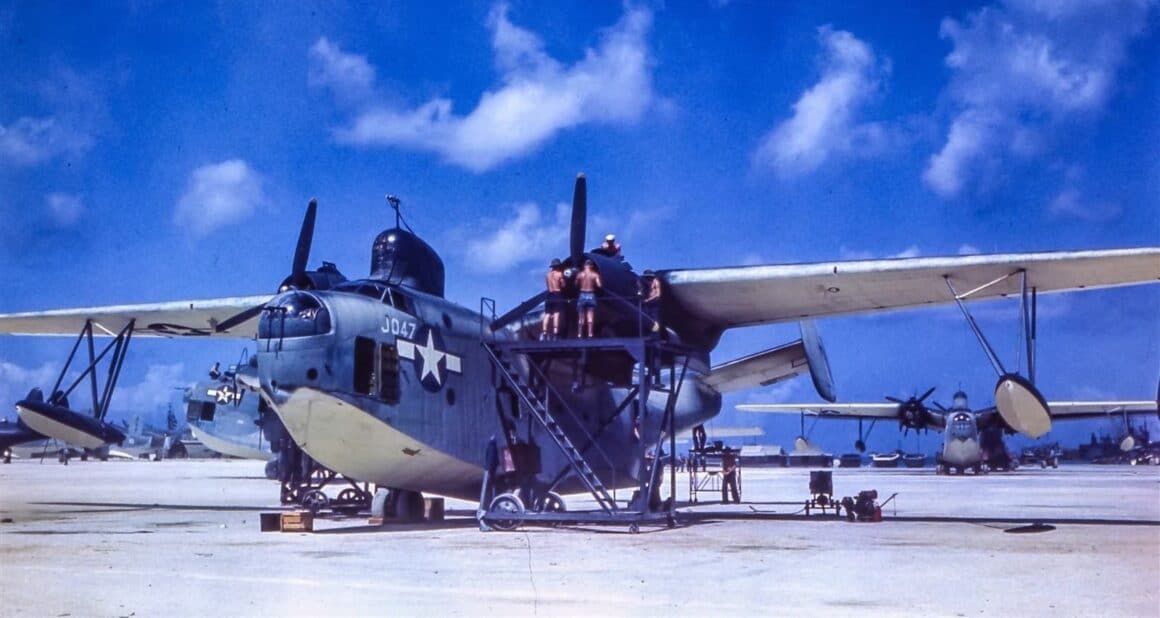
Still a Mystery
A PBM-5 (Bureau Number 59225) assigned to VP-49 departed Naval Air Station (NAS) Banana River at 1927 local time on 5 December 1945. Assigned to assist in the search for the missing group of TBM Avengers known as Flight 19, the crew made a routine radio call to the search coordinator at Banana River at 1930 local time. The aircraft was never seen or heard from again.
